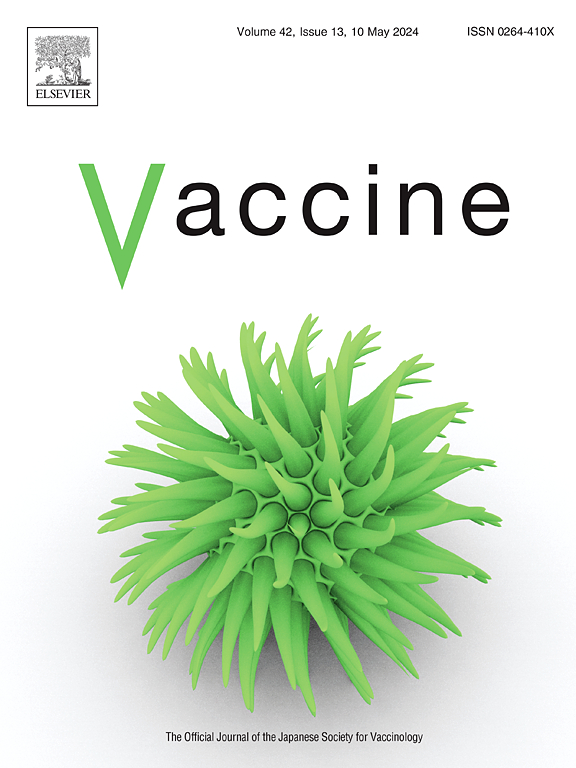The IFPMA IVS seasonal influenza vaccine dose distribution survey 2022–2023: evidence of the need for committed national investment in and uptake of seasonal influenza vaccination
IF 4.5
3区 医学
Q2 IMMUNOLOGY
引用次数: 0
Abstract
Seasonal influenza vaccines have the potential to prevent significant morbidity and mortality and the World Health Organization recommends that all countries consider implementing seasonal influenza immunization programmes. These provide invaluable supports to pandemic response, whether through the utilization of influenza epidemiological surveillance systems such as the WHO Global Influenza Surveillance and Response System (GISRS) or RespiMart, by imparting countries with ability to scale up vaccination in response to pandemics, and by contributing to the global production capacity for vaccines. During the COVID-19 pandemic, countries with higher influenza vaccination coverage also achieved higher COVID-19 vaccination coverage. But vaccine hesitancy and complacency are preventing optimal benefits from seasonal influenza vaccination. In 2008, the International Federation of Pharmaceutical Manufacturers and Associations' (IFPMA) Influenza Vaccine Supply International Task Force (IVS) developed a survey method to estimate vaccination coverage rates. The present survey, for 2022 and 2023, highlights that the vast improvements in seasonal influenza vaccination coverage rates achieved during 2020 and 2021 are regrettably not being sustained. Twenty-seven fewer countries in 2022 and 29 fewer countries in 2023 distributed any doses of seasonal influenza than in the peak year for number of countries, 2011. In 2023 there were 17 % fewer vaccine doses distributed globally than in the peak year, 2020. Only 33 of 195 countries achieved the hurdle rate in 2023, defined as number of doses distributed to ≥15.9 % of the population. Governments can strengthen performance of their seasonal influenza vaccination programs with a few key actions. Because immunization returns up to 19 times the cost in societal value, it is critical for governments to identify and implement appropriate countermeasures to vaccine hesitancy and complacency including vaccine advocacy, communications, and communication training for Healthcare Workers. Governments' challenge is to sustain resolve beyond the public health emergency of COVID-19.
IFPMA IVS《2022-2023年季节性流感疫苗剂量分布调查:需要国家承诺投资和采用季节性流感疫苗接种的证据
季节性流感疫苗有可能预防大量发病率和死亡率,世界卫生组织建议所有国家考虑实施季节性流感免疫规划。无论是通过利用世卫组织全球流感监测和应对系统(GISRS)或RespiMart等流感流行病学监测系统,还是通过向各国传授应对大流行时扩大疫苗接种的能力,以及通过促进全球疫苗生产能力,这些都为大流行应对提供了宝贵的支持。在COVID-19大流行期间,流感疫苗接种覆盖率较高的国家也实现了更高的COVID-19疫苗接种覆盖率。但是,对疫苗的犹豫和自满阻碍了季节性流感疫苗接种的最佳效益。2008年,国际药品制造商和协会联合会(IFPMA)流感疫苗供应国际工作组(IVS)开发了一种估算疫苗接种覆盖率的调查方法。目前针对2022年和2023年的调查强调,令人遗憾的是,2020年和2021年期间在季节性流感疫苗接种覆盖率方面取得的巨大进步未能持续下去。与国家数量最多的年份2011年相比,2022年和2023年分别减少27个和29个国家分发任何剂量的季节性流感。2023年,全球分发的疫苗剂量比高峰年2020年减少了17%。在195个国家中,只有33个国家在2023年实现了目标率,其定义为向≥15.9%的人口分发的剂量数量。各国政府可以通过一些关键行动加强其季节性流感疫苗接种规划的绩效。由于免疫的社会价值回报高达成本的19倍,因此各国政府必须确定并实施适当的应对措施,以应对疫苗犹豫和自满情绪,包括疫苗宣传、沟通和卫生保健工作者的沟通培训。各国政府面临的挑战是在COVID-19突发公共卫生事件之后保持决心。
本文章由计算机程序翻译,如有差异,请以英文原文为准。
求助全文
约1分钟内获得全文
求助全文
来源期刊

Vaccine
医学-免疫学
CiteScore
8.70
自引率
5.50%
发文量
992
审稿时长
131 days
期刊介绍:
Vaccine is unique in publishing the highest quality science across all disciplines relevant to the field of vaccinology - all original article submissions across basic and clinical research, vaccine manufacturing, history, public policy, behavioral science and ethics, social sciences, safety, and many other related areas are welcomed. The submission categories as given in the Guide for Authors indicate where we receive the most papers. Papers outside these major areas are also welcome and authors are encouraged to contact us with specific questions.
 求助内容:
求助内容: 应助结果提醒方式:
应助结果提醒方式:


